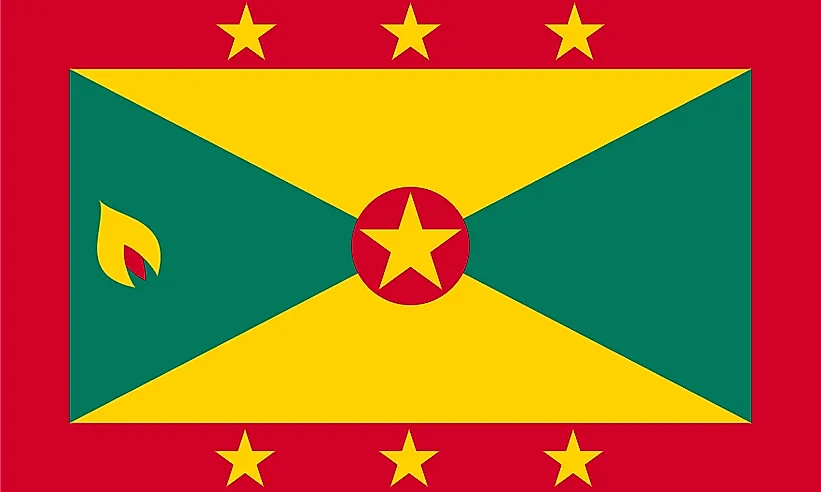
그레나다
| 대륙 | 아메리카 |
| 자본 | 세인트 조지 |
| 인구 | 111,219 |
| GDP | $1.51억 |
| 1인당 GDP | $14,100 |
| 다이얼링 코드 | +1-473 |
| ISO 코드(2글자) | GD |
| ISO 코드(3글자) | GRD |
그레나다 소개
카리브해의 중심부에 위치한 '향신료의 섬'으로 알려진 열대 낙원 그레나다에 오신 것을 환영합니다. 3개의 주요 섬에 걸쳐 약 112,000명의 주민이 344제곱킬로미터의 면적에 거주하는 그레나다는 자연의 아름다움과 풍부한 문화유산, 세계 최고의 향신료가 어우러진 곳입니다.
지리적 특징과 자연의 아름다움
그레나다의 지형은 세 개의 주요 섬으로 이루어져 있습니다: 그레나다, 카리아쿠, 쁘띠 마르티니크는 화산에서 유래하여 극적인 풍경을 연출하는 것이 특징입니다. 본섬의 내부는 840미터 높이의 세인트 캐서린 산으로 우거진 열대우림과 폭포수로 둘러싸여 있습니다.
해안선에는 깨끗한 백사장과 검은 모래 해변이 있으며 산호초가 수많은 만과 자연 항구를 보호하고 있습니다. 몰리네르 베이의 독특한 수중 조각 공원은 예술과 해양 보호가 결합된 곳입니다.
주목할 만한 명소로는 화산 분화구에 자리한 그랜드 에탕 호수와 그림처럼 아름다운 아난데일 폭포가 있습니다. 그레나다의 열대 기후는 다양한 생태계와 특히 육두구와 메이스를 비롯한 향신료 재배를 지원하여 그레나다의 유명한 별명을 얻었습니다.
문화 유산과 전통
그레나다 문화에는 아프리카, 카리브해 원주민, 프랑스, 영국의 영향이 혼합되어 있습니다. 전통 예술에는 음악과 춤이 포함되며, 빅 드럼과 쿼드릴 같은 민속 스타일은 아프리카 및 유럽 유산과의 문화적 연관성을 유지합니다.
스파이스마스로 알려진 이 나라의 카니발은 생동감 넘치는 의상과 음악, 잽잽과 같은 전통 캐릭터를 선보입니다. 현지 요리에는 신선한 해산물과 열대 과일, 이 섬의 유명한 향신료가 풍부하게 사용됩니다.
전통 공예에는 바구니 짜기, 목각, 향신료 기반 제품 생산이 포함됩니다. 서아프리카에 뿌리를 둔 추수감사절 전통인 사라카의 관습은 문화유산 보존의 중요성을 보여줍니다.
역사 여행
그레나다의 역사는 아라왁과 카리브 원주민 정착지에서부터 프랑스와 영국 식민지 시대에 걸쳐 있습니다. 이 섬은 1974년 독립하기 전까지 프랑스와 영국의 통치를 여러 차례 거쳤습니다.
중요한 사건으로는 1979년 혁명, 1983년 개입, 이후 민주적 통치 체제로의 복귀 등이 있습니다. 최근 수십 년 동안 관광과 농업이 꾸준히 발전했습니다.
현대 경제 환경
오늘날 그레나다의 경제는 주로 관광, 농업, 교육 서비스에 의존하고 있습니다. 그레나다는 세계 최대의 육두구와 메이스 수출국 중 하나이며 지속 가능한 관광 이니셔티브를 개발하고 있습니다.
최근 개발은 생태 관광, 지속 가능한 농업, 성장하는 해외 교육 부문에 초점을 맞추고 있습니다. 투자에 의한 시민권 프로그램은 경제 개발과 인프라 프로젝트에 기여하고 있습니다.
국제 관계 및 글로벌 포지셔닝
그레나다는 카리브해 지역기구, 특히 카리브해경제공동체(CARICOM)와 카리브해경제협력체(OECS)에 적극적으로 참여하고 있습니다. 기후 변화와 지속 가능한 개발에 대한 그레나다의 입장은 환경 문제에 대한 취약성을 반영합니다.
알고 계셨나요?
- 그레나다는 인도네시아에 이어 두 번째로 전 세계 육두구의 약 20%을 생산하나요?
- 이 나라의 국기에는 일곱 개의 별이 있는데, 이는 일곱 개의 행정 구역을 의미하나요?
- 그레나다의 수중 조각 공원이 세계 최초라고요?
- 이 섬에 카리브해에서 가장 오래된 럼주 증류소가 있다고요?
결론
그레나다는 카리브해에서 자연의 아름다움, 문화적 풍요로움, 경제적 잠재력이 독특하게 조화를 이루고 있는 곳입니다. 향신료 향이 가득한 공기부터 깨끗한 해변, 역사적 유산부터 현대적인 개발까지, 그레나다는 독특한 개성을 유지하면서 계속 발전하고 있습니다. 그레나다는 기후 변화와 경제 다각화 등의 문제를 해결하면서 카리브해에서 사랑받는 향신료 섬으로서의 정체성을 보존하는 동시에 지속 가능한 발전을 위해 최선을 다하고 있습니다.





